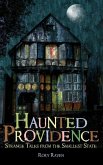Fairy Godfather Straparola, Venice, and the Fairy Tale Tradition Ruth B. Bottigheimer "Fairy Godfather: Straparola, Venice, and the Fairy Tale Tradition makes the case that the fairy tale, far from rising from the ground as a rural folk tradition, was invented by a city-bound sixteenth-century Italian literary hack, Zoan Francesco Straparola."--Adam Gopnik, New Yorker "A vivid and compelling picture of life in Venice and the Veneto in the sixteenth century."--Guido Ruggiero, Pennsylvania State University "Thanks to the initiative and wide-ranging scholarly industry of Ruth Bottigheimer, teachers and students . . . now have available to them a highly readable, at times quite engrossing account of the little that is known, and whatever can be surmised, about the author who launched the genre that was to become the literary folk fairy tale."--The Lion and the Unicorn "A masterly demonstration. . . . A substantial achievement."--Times Literary Supplement "Well researched, gracefully written, and beautifully printed. Highly recommended."--Choice In the classic rags-to-riches fairy tale a penniless heroine (or hero), with some magic help, marries a royal prince (or princess) and rises to wealth. Received opinion has long been that stories like these originated among peasants, who passed them along by word of mouth from one place to another over the course of centuries. In a bold departure from conventional fairy tale scholarship, Ruth B. Bottigheimer asserts that city life and a single individual played a central role in the creation and transmission of many of these familiar tales. According to her, a provincial boy, Zoan Francesco Straparola, went to Venice to seek his fortune and found it by inventing the modern fairy tale, including the long beloved Puss in Boots, and by selling its many versions to the hopeful inhabitants of that colorful and commercially bustling city. With innovative literary sleuthing, Bottigheimer has reconstructed the actual composition of Straparola's collection of tales. Grounding her work in social history of the Renaissance Venice, Bottigheimer has created a possible biography for Straparola, a man about whom hardly anything is known. This is the first book-length study of Straparola in any language. Ruth B. Bottigheimer teaches in the Department of Comparative Literature, State University of New York at Stony Brook. She is the author also of Fairy Tales and Society: Illusion, Allusion, and Paradigm. 2002 176 pages 6 x 9 6 illus. ISBN 978-0-8122-3680-4 Cloth $55.00s £36.00 ISBN 978-0-8122-0139-0 Ebook $55.00s £36.00 World Rights Literature, Cultural Studies Short copy: "Fairy Godfather: Straparola, Venice, and the Fairy Tale Tradition makes the case that the fairy tale, far from rising from the ground as a rural folk tradition, was invented by a city-bound sixteenth-century Italian literary hack, Zoan Francesco Straparola."--Adam Gopnik, New Yorker








